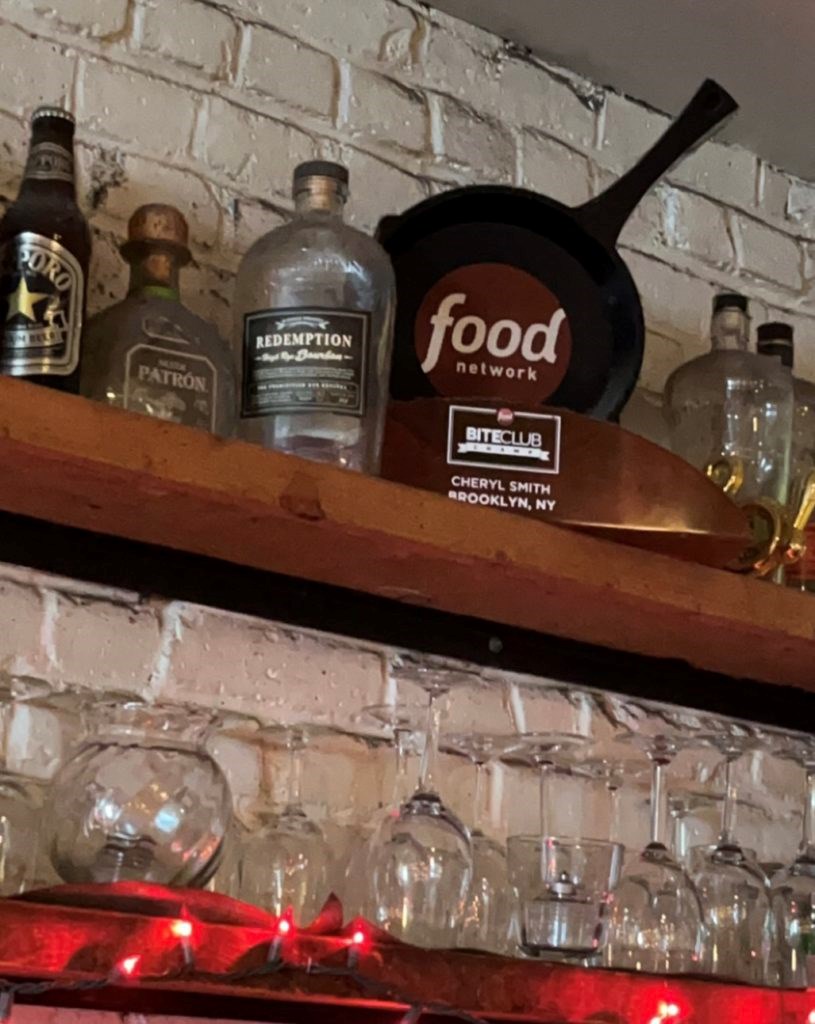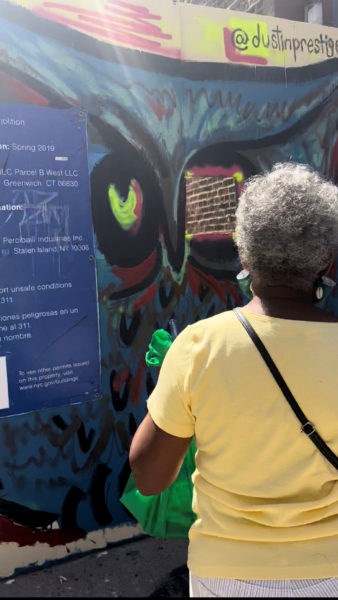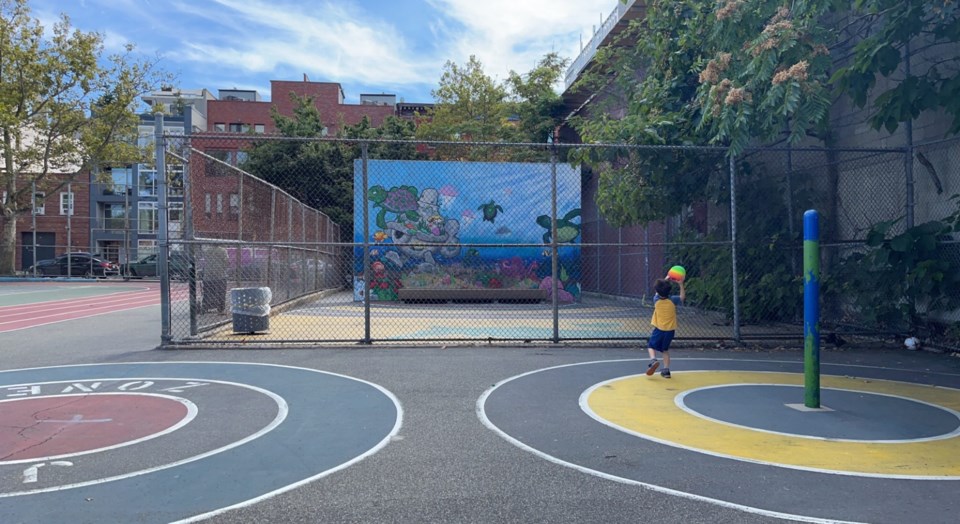Colorful murals are popping up all over Prospect Heights, thanks to the work of curators like Jeff Beler, founder of the UnderHill Walls public art installation.
But the neighborhood's community of business owners, residents and local leaders also have a major hand in the wide success and sustainability of these artworks. Here's their take on the art that's found a home on their block.
Businesses Owners

Photo: Natasha Knows, BK Reader
Art makes for better business! Just ask Cheryl Smith, owner of Cheryl's Global Soul, a popular restaurant located on Underhill Ave., just steps away from the UnderHill Walls. "People come from the museum and the botanical garden, to grab some food or check out the neighborhood, so to have the extension of the artwork right there is very cool," Smith said. The black-owned restaurant has been a staple in the community, serving everything from soul food to Caribbean dishes for the past seventeen years. Smith, a Food Network star and performing artist, finds her prime location and nearby attractions to be key drivers in foot traffic to the restaurant and their live music shows.
"If you really take a look at the value of the murals, the color, the nostalgia ... it brings about a feeling of community," Smith said.
Marcos Luis, actor, and One Mic Night podcast host can also be found mixing cocktails or drawing in the open mic crowd to Cheryl's, a restaurant and bar in Prospect Heights. "I live in the neighborhood and am amazed every time I see the [art] work," Luis said. "Jeff has managed to bring some of the most incredible street artists to the neighborhood to make it beautiful."

The neighborhood is anchored by several landmarks ,such as the Brooklyn Museum, Botanical Garden, Grand Army Plaza and Central Library.
"Cheryl's is a center point," he said. "When people come through the neighborhood, they are mesmerized by the fact that we have an entire wall full of murals that take them to a place and time that makes this area of Brooklyn very, very special."
He acknowledges that organizing a community to create work of this scale is far from an easy feat. "Hats off to Jeff [Beler] because he's moving from just being a visual artist." Luis adds, "This takes money, the neighborhood to come together, donations and the nonprofit to give back to artists."
Neighbors

“Some of it’s good, some of it’s bad!” is how one Prospect Heights resident describes the murals in her neighborhood during her afternoon stroll. “Good means it has to interpret something, not just be paint thrown up with no meaning.” The homeowner, who's chosen to remain nameless, loves the neighborhood she’s called home for the past forty years.
“Like this owl looks good, it’s watching us,” she said while pointing at one of the murals. “It’s nice to have extra eyes on this block,” she said. “We need someone to look out for us.”
The introspective neighbor moves in for a closer look at the mural and vacant lot: "I'd like to see more conversation pieces and closed street access areas to truly enjoy the artwork.”
Community Leaders
Community input is one valuable resource that curators and community leaders seek to leverage for potential art projects. One avid fan and advocate of the murals is Crystal Hudson, Council Member for New York City’s District 35, which covers the neighborhoods of Prospect Heights, Fort Greene, Clinton Hill, parts of Crown Heights and BedStuy.
“UnderHill Walls is one of my favorite spots,” Council Member Hudson said. "I love that the work rotates so there’s always something fresh and new for the community.”

Hudson, elected in 2021 made history as one of the first out gay Black women ever elected in NYC. The community organizer and public servant has committed her career to accessibility. “Accessibility in public arts means creating opportunities, particularly for BIPOC and LGBTQ+ artists who typically face barriers in showcasing their work," she adds "while also engaging underserved communities to participate in the artwork.”
“Having as many public art installations as possible, working closely with various partners to find spaces for murals, and getting the community involved on what they’d like to see in their neighborhood is a game changer,”she said.
“Art has been and will remain a valuable part of the conversation from uprisings to revolutions.” Hudson adds,” Prioritizing the artists that don’t typically have the opportunity to showcase this work is part of that progress.”
Stay tuned for part 3 which highlights the final key element of the Prospect Heights public art space – the artists.



.png;w=120;h=80;mode=crop)
